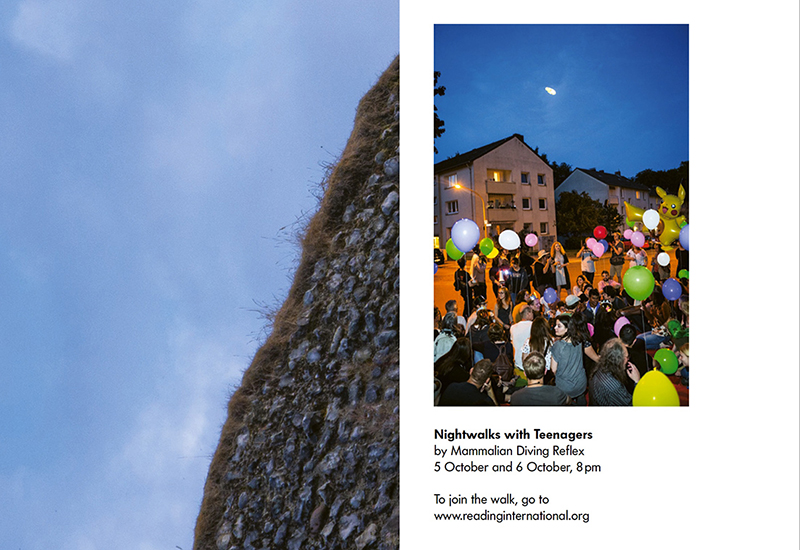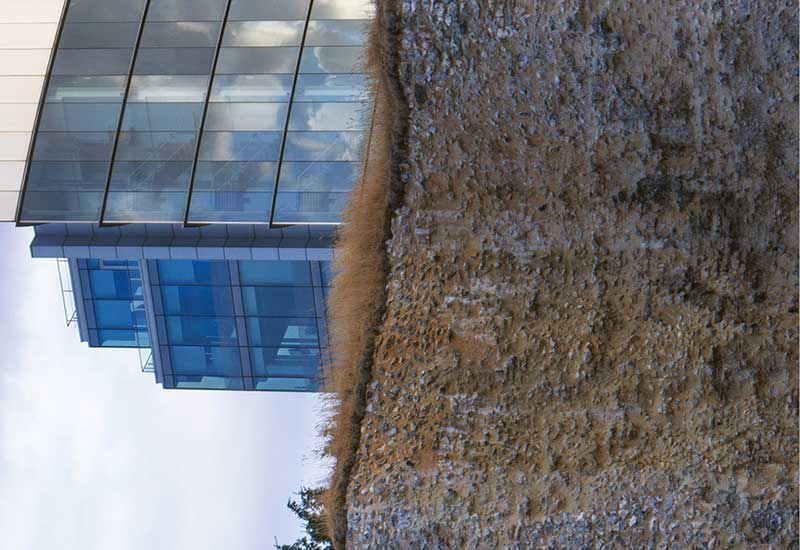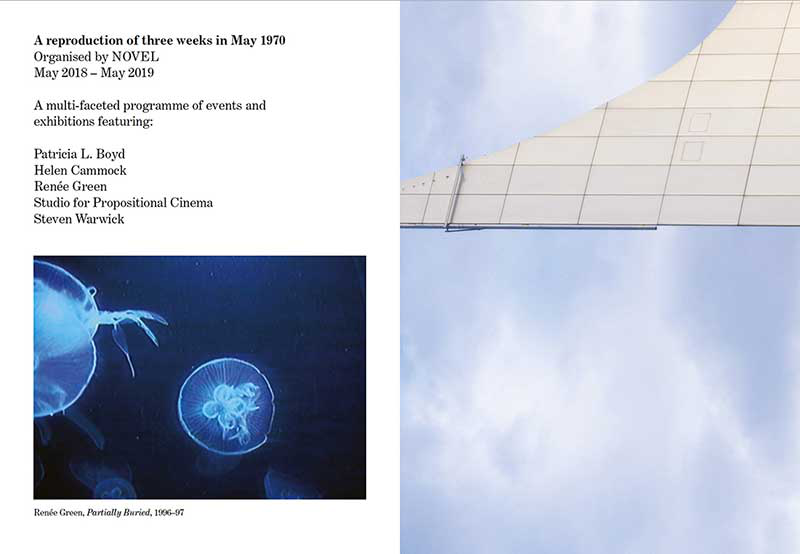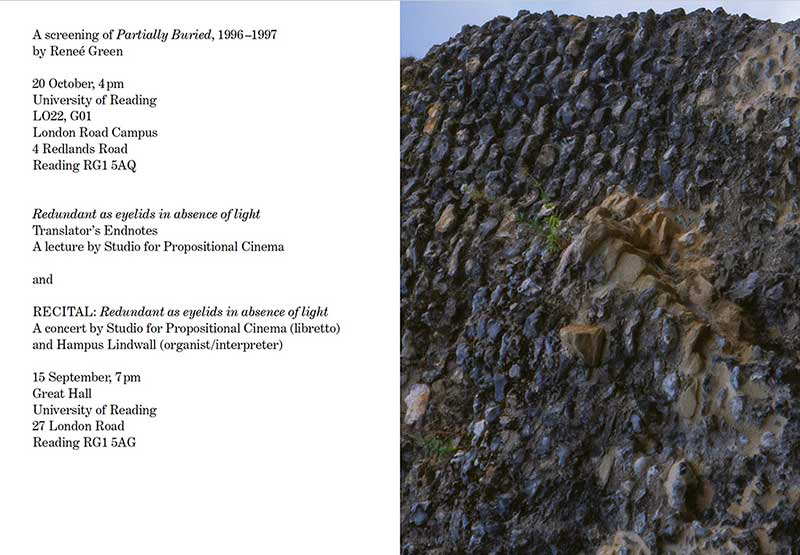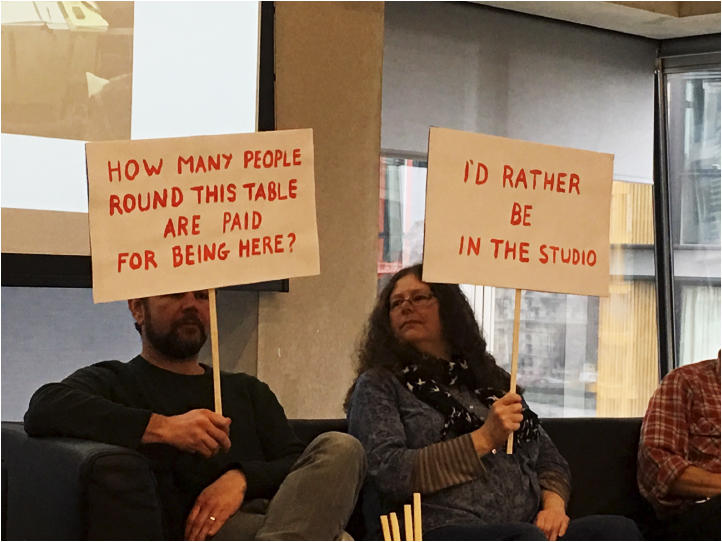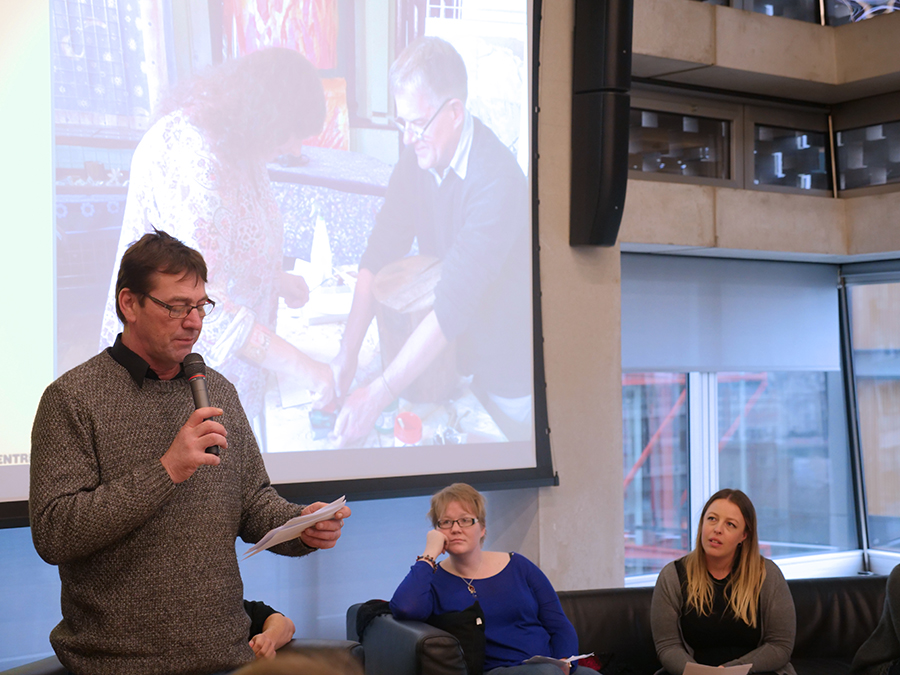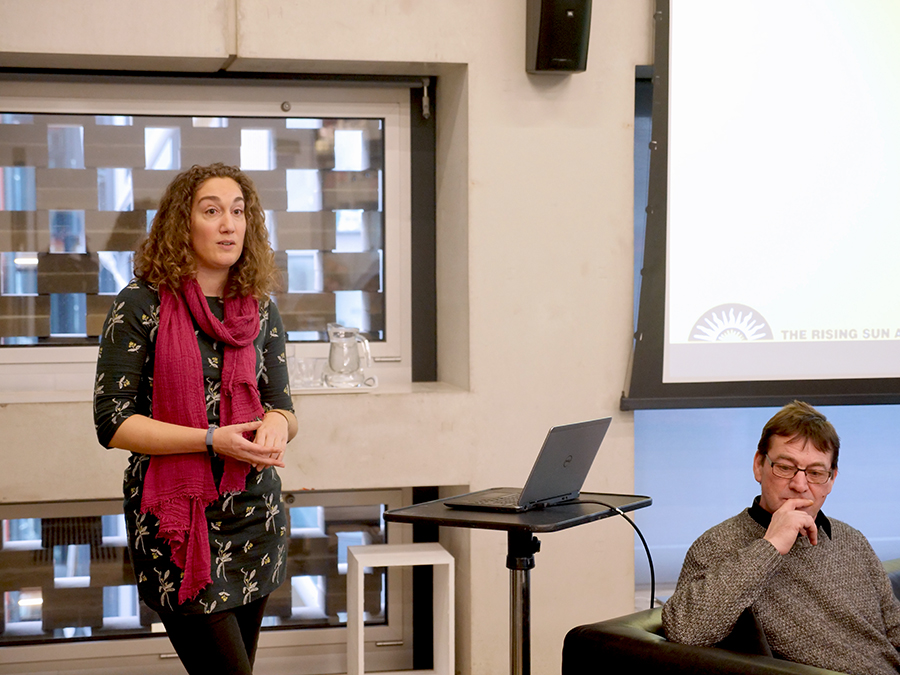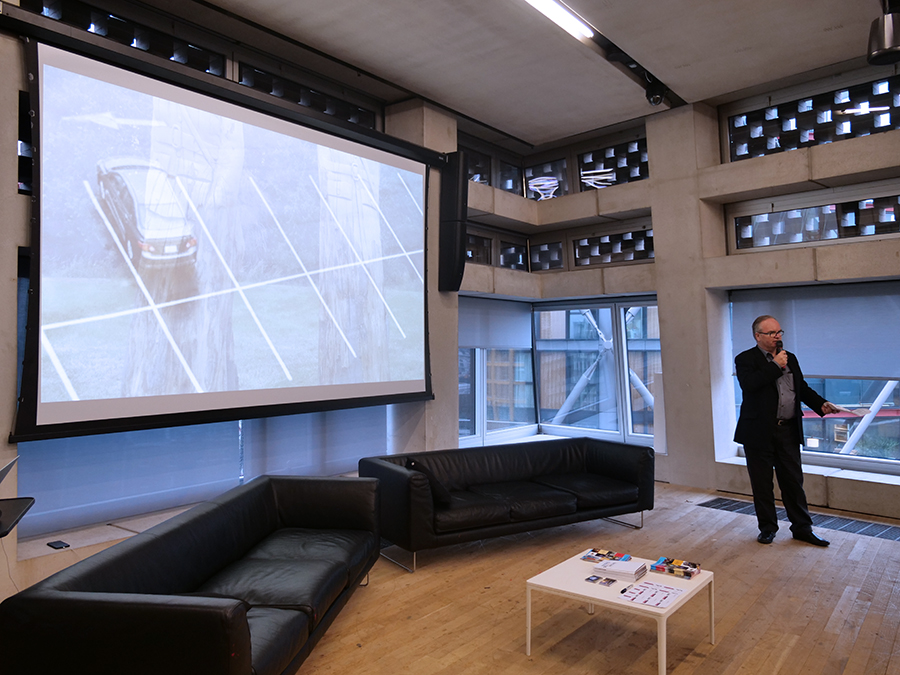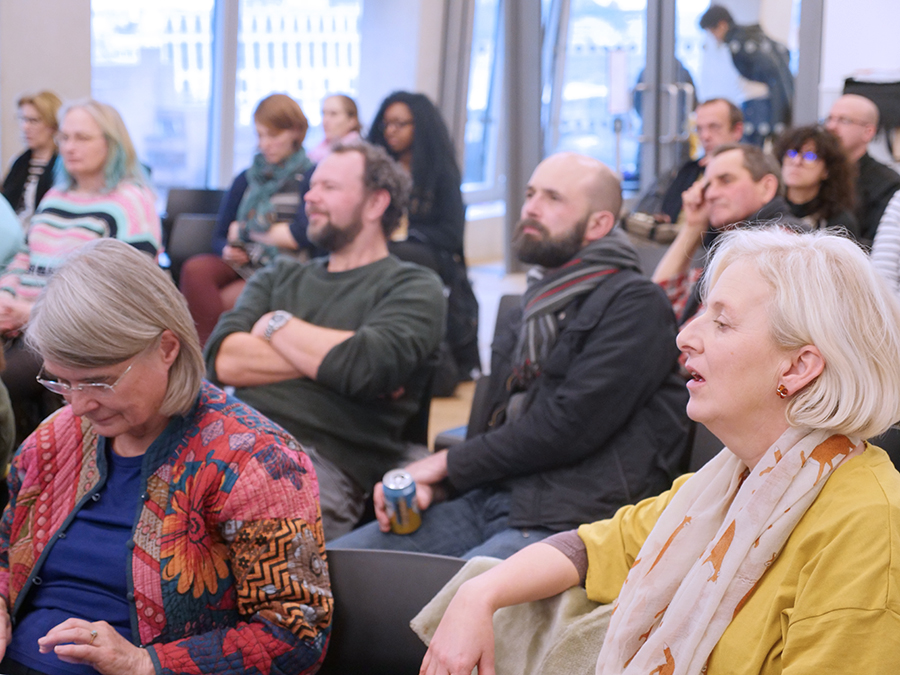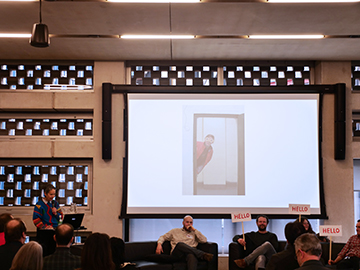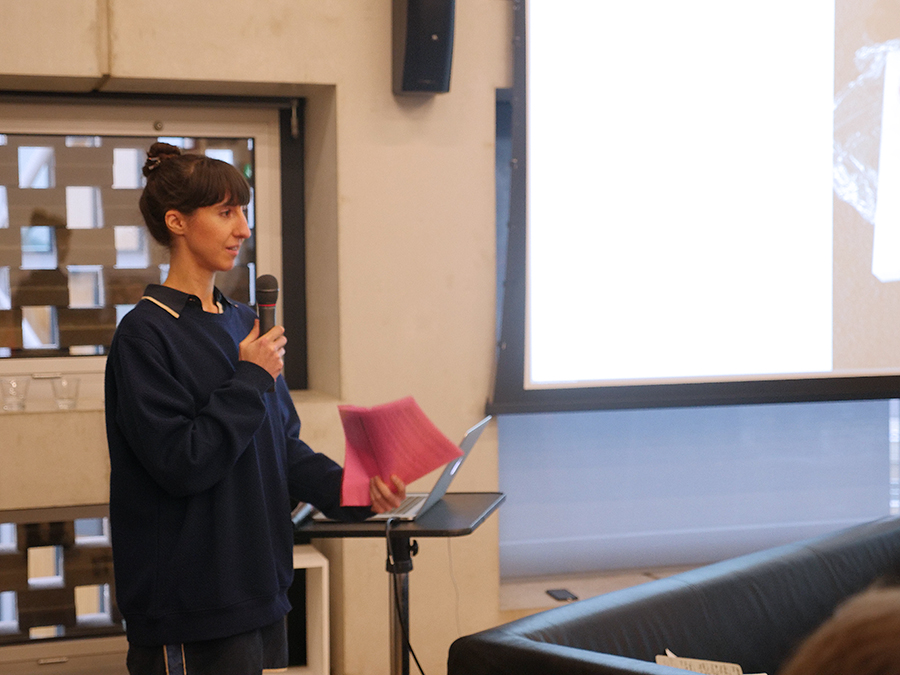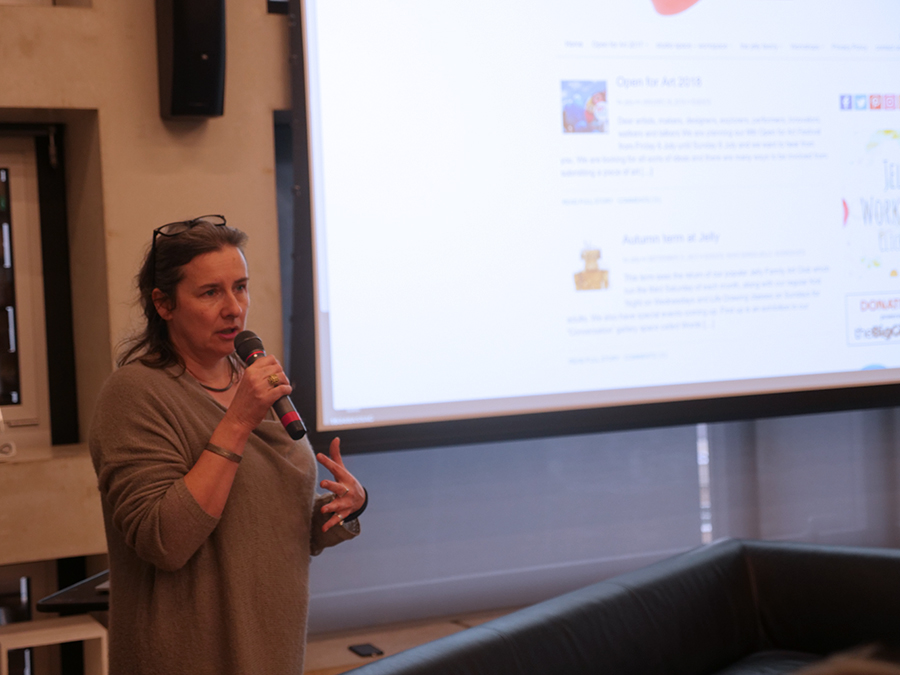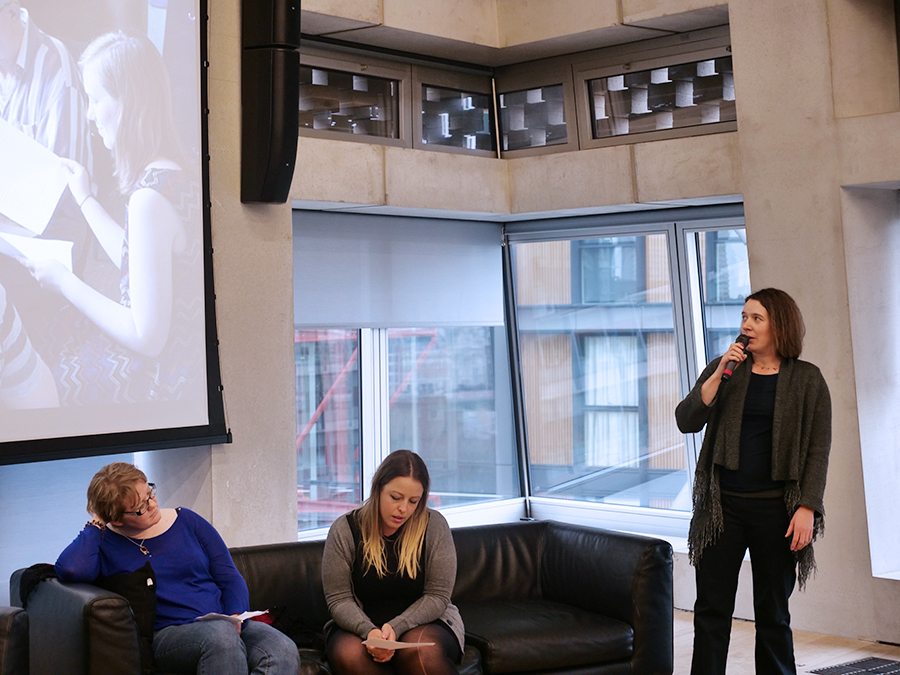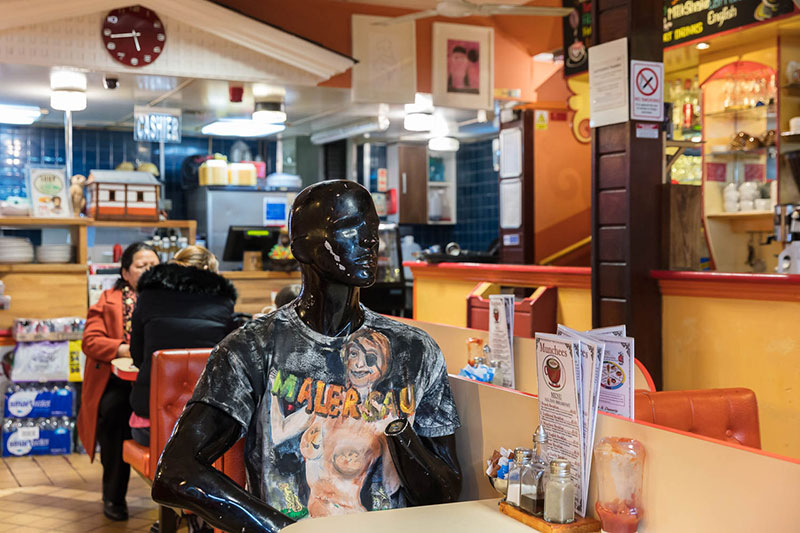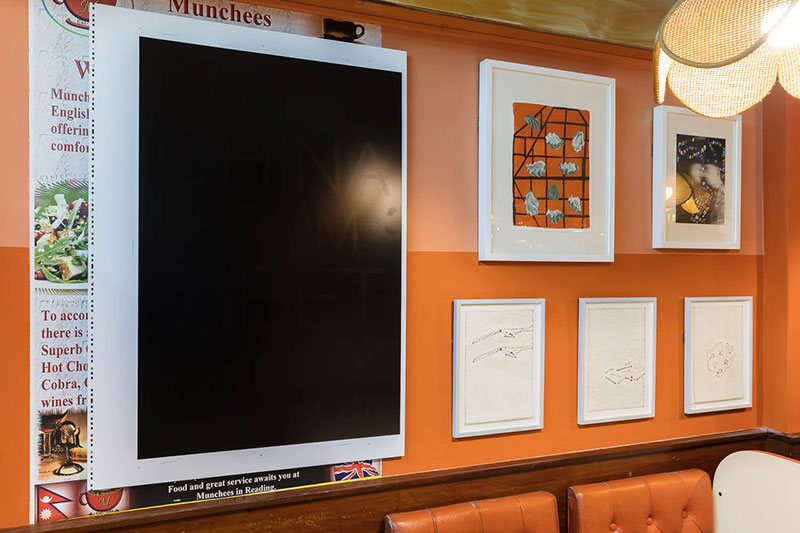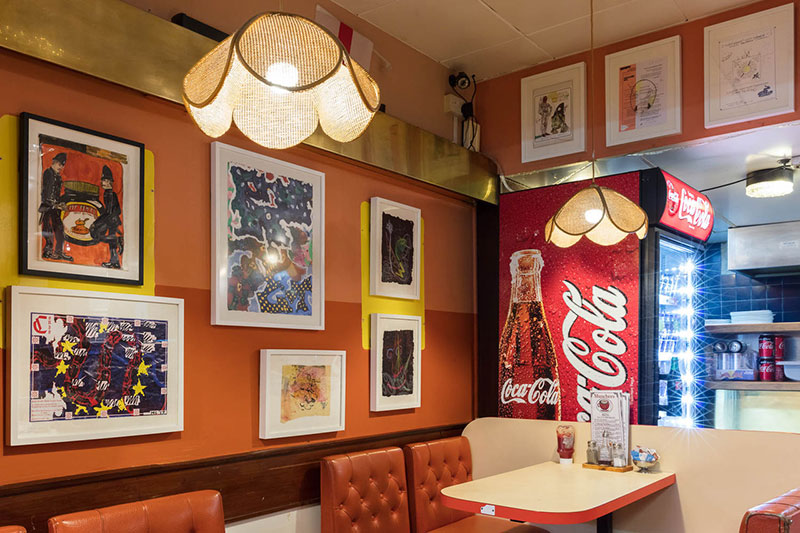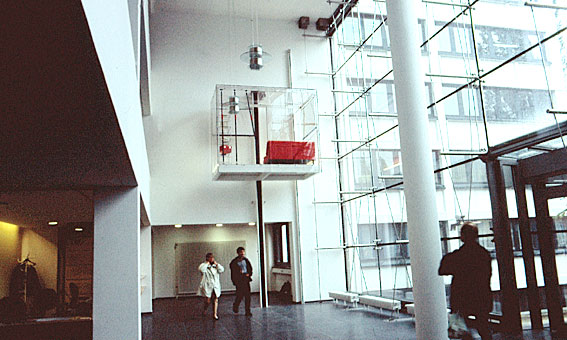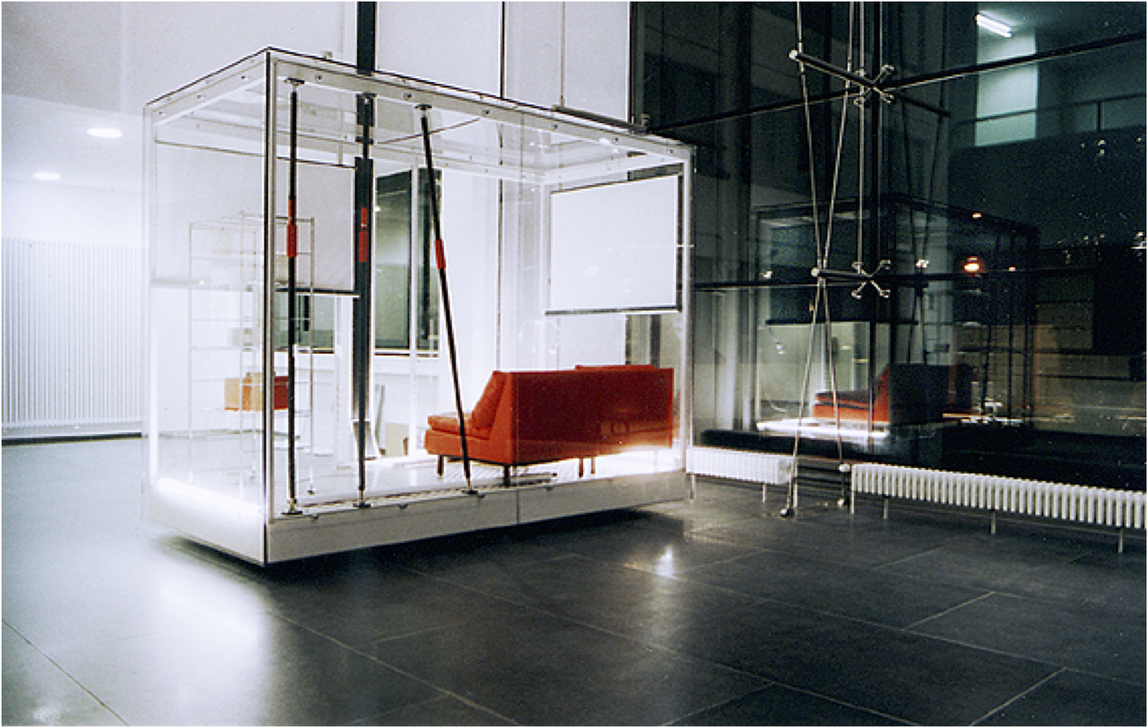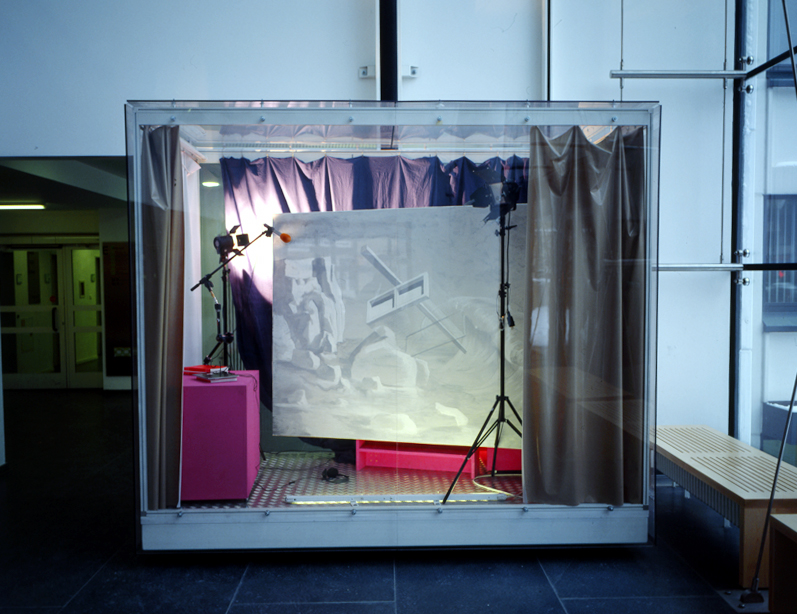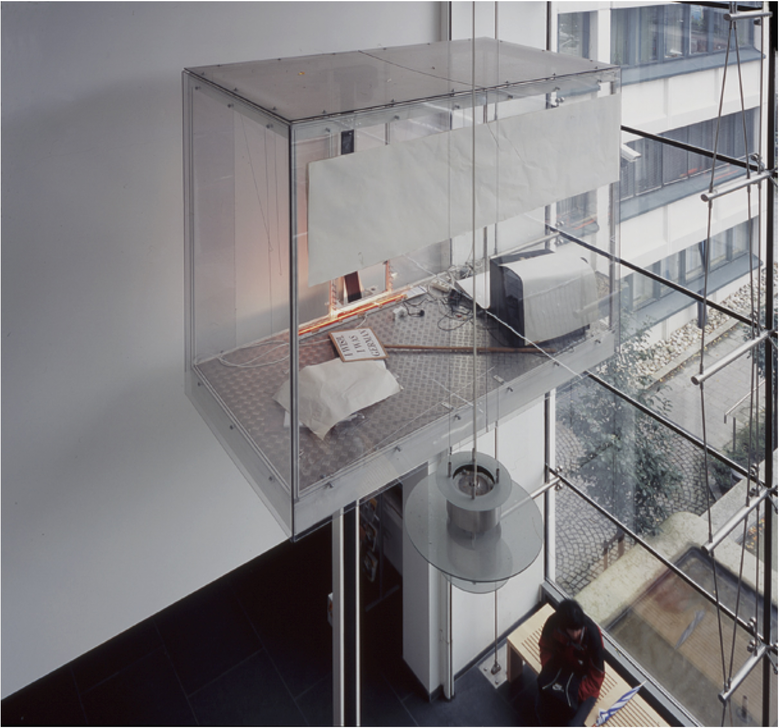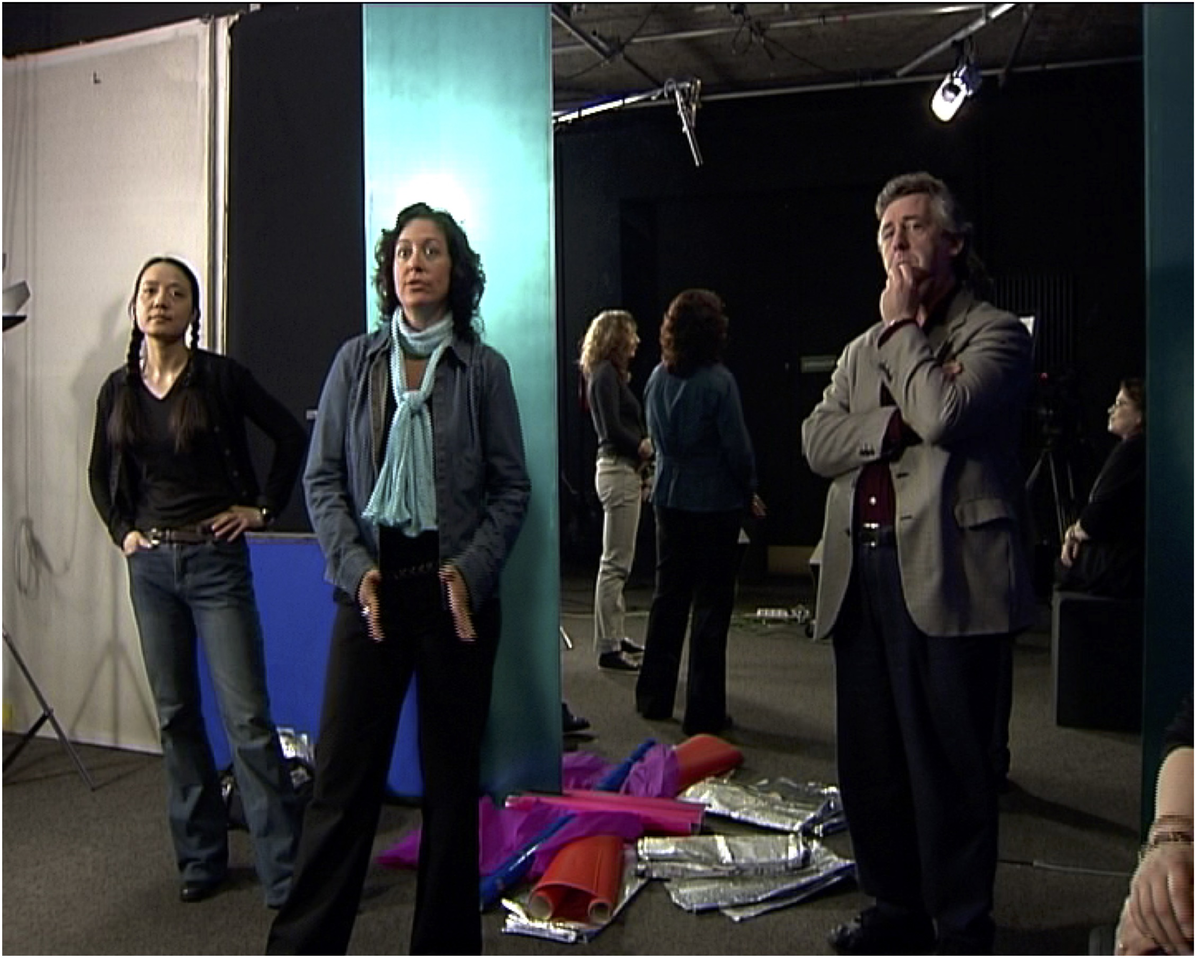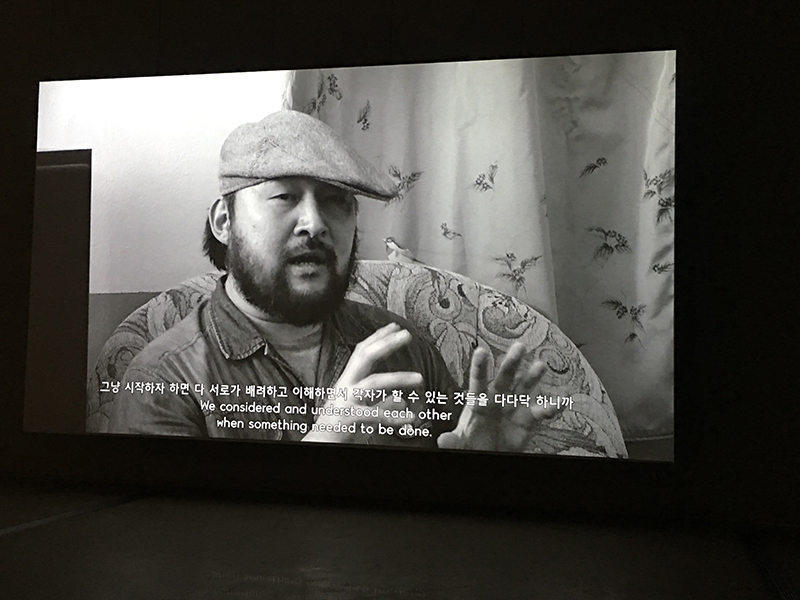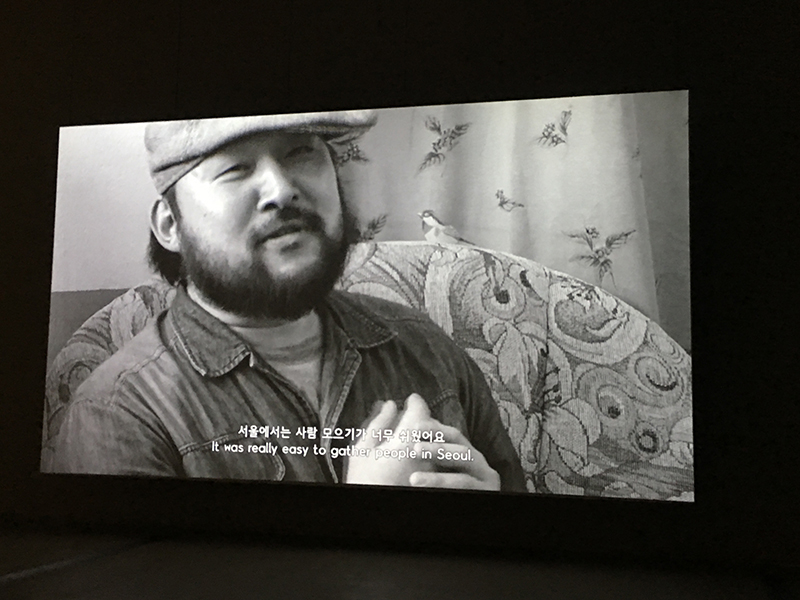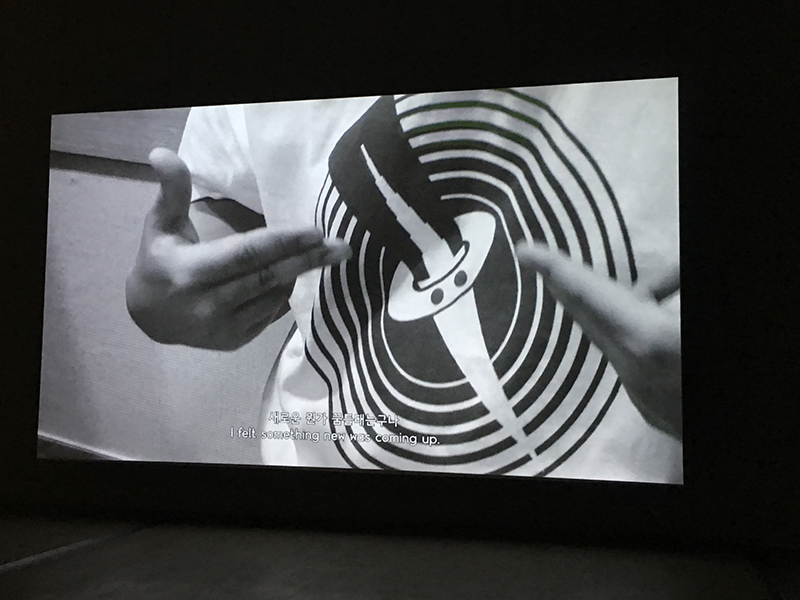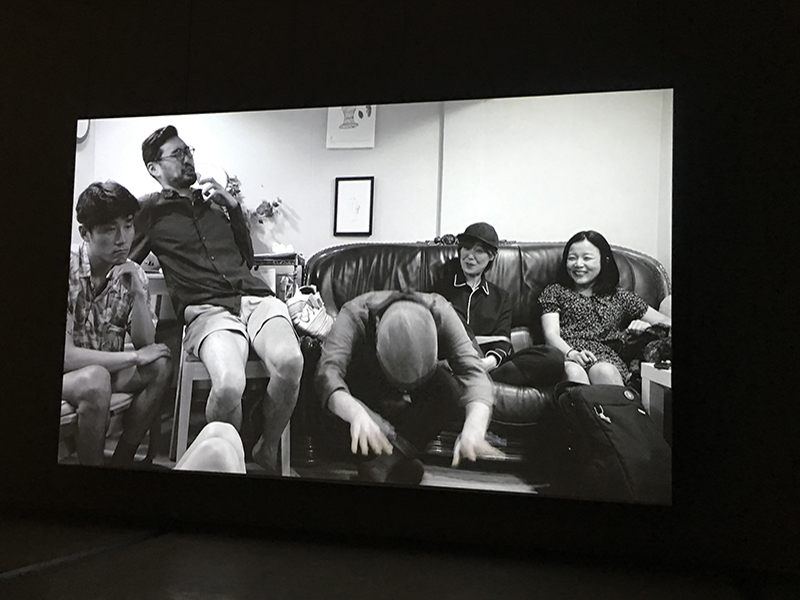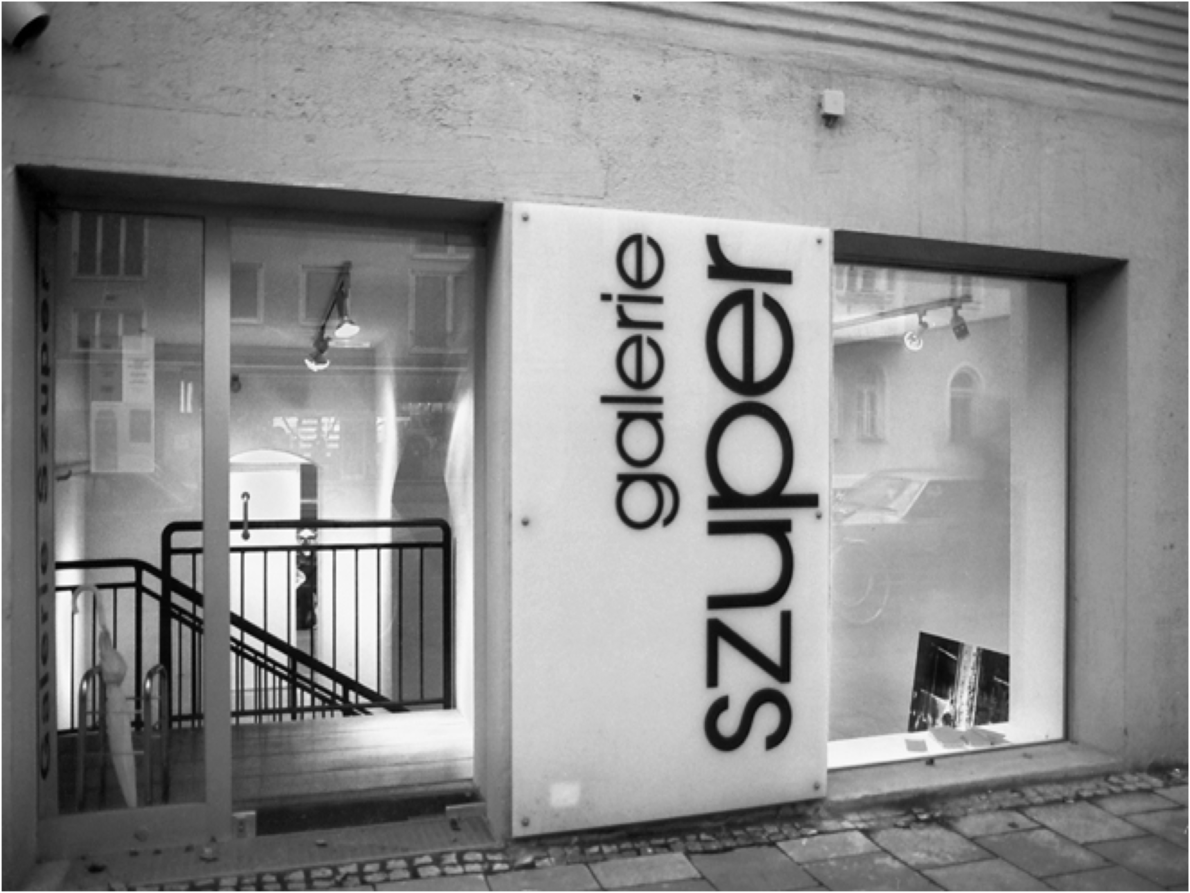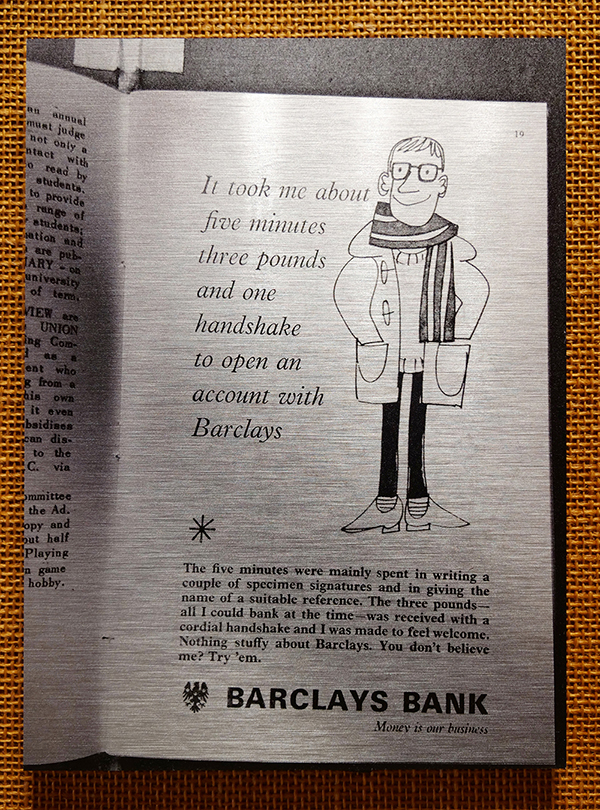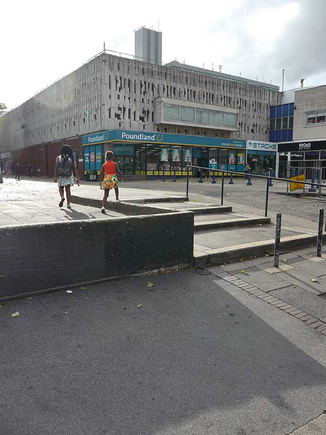This exposition presents the ongoing artistic research project ‘Curating the Art School – Propositions for developing a collaborative art space in the intersection between art school and community’ which has driven the creation of a new arts organisation at the University of Reading. I would like to offer an introduction to the research questions, a situational and theoretical background and present some of the artistic and curatorial explorations via photo documentation and links to the project pages as a running visual commentary on the right side of this exposition.
‘Reading International’ was established to develop and test the creation of a liminal space between an art school, a regional arts community and an international contemporary art network. By inviting artists to respond to the specific social and historical framework offered by the art school and the town the project aims to explore how we can imagine the art school in a university as a public arena, which opens its life beyond the academic community and actively engages with a wider public? Could the art school become a catalyst to create a speculative thinking space, erasing hierarchical (and economic) divisions between the educational environment and wider publics? How can we create a space that is less separated from the professional public, where artists collaborate with students and the community to create a dynamic cultural space in a regional environment? I would like to set out these questions at an interim stage of the project as a way to invite further responses and discussion.
1. The site-specific art school as a collaborative model
Reading International is a new contemporary art organisation located within the Reading School of Art at the University of Reading. It was founded and initiated in response to ongoing discussions with artists, academics, students and local arts organisations about how we might establish new models of working in education and to respond to the growing pressures experienced by students and young artists in connecting with the art market to generate a smooth entry into the successful triangle of academy – gallery – museum, and the increasing frustration of students to see future possibilities or career progressions within the so-called ‘art world’. At the same time it was an attempt to rationalise the existence of the art school within a regional environment, to find out if could act as a regional contemporary art hub or centre, and to explore its possibilities in connecting and engaging with the different rhythms of the local arts community, to interrelate and raise ambitions for its co-existence and future. Building on my experience in collaboration and self- institutionalisation (Szuper Gallery), in developing critical partnerships with challenging institutions (Liftarchive), working as an artist in a university I was interested in creating a new ‘container’, an idea for a space that could involve artists, students and community in order to make the art school more site-specific, and more useful for its members. I set off to imagine the art school in the university as a public arena, which opens its life beyond the academic community and actively engages with a wider public. Could the art school become a catalyst to create a speculative thinking space, erasing hierarchical and monetary divisions between the educational environment and the wider public? How can we create a space that is less separated from the professional public, where artists collaborate with students and the community to create a dynamic cultural space in a regional environment? What groups and partners should we invite? What would a model for such a public space look like? What are the challenges? How can we conceive of curating the university to the benefit of both students and those outside of the university? What is at stake in this collaborative effort?
This exposition sets out the wider framework that drives the creative processes that guide the work with artists and partners and introduces some its results. I am intentionally positioning this project within the context of artistic research, as it is my explicit experience as an artist working in and with a number of collaborative formats and within an educational framework that drives this projects. After introducing a series of examples as case small studies I will reflect on outcomes and challenges to examine what we have learned in the process and how our findings might contribute to wider framework of discussion on collaboration in and through art education?
1.1. Szuper Gallery – Liftarchiv - Reading International
Why is everybody always talking about collaboration? In his latest book Mark Terkessidis focuses on the imperatives of collaboration, co-operation, and self-organisation, which, as he outlines, are ubiquitous not only in the entrepreneurial sector, but also in today’s cultural institutions, state agencies or businesses.[1] Starting from an argument on a pointed critique of the institutional pitfalls of Germany’s ‘integration debate’, Terkessidis looks at how concepts like participation and self-organisation could promise a sense of renewed democratisation for working in and with institutions, and how this could connect not only to politics but also art practice. He explains how although the imperative to collaborate originates in the neoliberal tendency for governments to shift their responsibilities onto the individual and onto communities, he believes that a new approach to collaboration could also trigger a genuine will to create something together, and that the ensuing opportunities actually have the potential to open up new spaces.
When I was an art student in the late 1990s there were no courses, lectures or other teaching sessions on ‘professional practice’ or creative entrepreneurship. It became clear rather quickly that self-initiative was the only workable way forward, and so there was a need to appropriate, to pretend, or even to pose as ‘professionals’. In doing so we also always tried to subvert our understanding of what ‘professionalism’ actually meant. The 1990s across Europe saw numerous artists’ groups and projects institute themselves. On graduation from the Munich Academy of Fine Art I was offered the opportunity to take over a commercial gallery (Szuper Gallery), working collaboratively with two other artists, as the gallery owner went into another business. With little experience of the commercial world, and as new collaborators, we started the curious project of managing the gallery, which had originally been dealing in contemporary art from the Ukraine and former Soviet Union. It seemed the obvious challenge to us that we had to take on this format as a conceptual project in itself and so we started running Szuper Gallery as a tool to develop the formal vocabularies of a commercial gallery, to extend and define the concept of ‘gallery’ as a form of institutional critique. The gallery went bankrupt not only because we were not focusing on selling art works but because we turned the running of the gallery into a performance of itself. We staged private views as performance events, we performed our gallery sponsors as exhibits, and we curated exhibitions and worked with artists who were equally questioning the frame of a commercial gallery in interesting and challenging ways. When the commercial enterprise broke down, we appropriated the name ‘Szuper Gallery’ as an umbrella for our future collaborative activities.
Since then Szuper Gallery has continued to be a useful device for an artistic strategy that has enabled me to take on different roles and personas, of artist, curator, producer, gallerist and educator, and I have since used it for different interventions and collaborations. These turned out to be mainly different institutions, places of work or authority, or whoever would employ us or pay for working with me and my collaborators. Each of these ensuing collaborations with artists and institutions carried with them different structures and challenges around questions of collaboration, authorship or partnership.
The Liftarchive is one the collaborations that Szuper Gallery undertook with a local authority institution, commissioned by ‘Quivid’[2], the public art programme run by the city of Munich under the umbrella of the Department of Public Construction of the City of Munich.[3] The Liftarchive is a permanent site-specific installation. It was installed in Munich’s Immigration and Registry Office and is comprised of a glass container installed at a height of eight metres’ on a movable, hydraulic platform. The container mimicked the ‘white cube’ of the gallery space, fully transparent, yet separated from the institution by its height and by its glass walls. This container travelled up and down the wall of the government office, and was opened to the public at regular intervals. Situated within the context of the immigration office it performed the functions of a living archive, building content by hosting a series of interventions and projects by different artists, who on our invitation responded to the context of the administration of immigration in different, and sometimes difficult ways. The Liftarchive referred itself to the institution, but offered no release from its content or challenges. It was successful as a provocation of a self-contained art space, but it was also a catalyst for conversation and debate. Over the course of the two years of programming it became increasingly clear that the space that it had occupied as an artwork was located in the somewhat liminal space of co-operation that had opened up between the hosting institution and the artists, its complicated guests.[4]
The question of what collaboration could mean in an art school remains pertinent. For the video project ‘The strength of the system, my experiences of it, was that in fact, oddly enough, it was actually a very collaborative enterprise already’ (Video, 30 mins, DVD, 2006). I conducted an interview study with different artists questioning their understanding of collaborative processes in teaching[5]. From this material I produced a video work, for which I re-enacted the original interviews with the help of a group of both professional and amateur actors. These actors can be seen in a recording studio, grouped in a situation that resembles a seminar or studio set-up,re-performing the interview scripts by reading them off an auto-cue, and thereby engaging in different moments of collaboration themselves. What I found in the interview process was that the respondents saw similar working strategies or parallels between creative processes and teaching situations, and they identified moments of co-authorship and collaborative processes. I identified several professional and collaborative models. These included the ‘invisible teacher’ who creates art-life-education crossovers, where teaching involves spending time together. Another model was that of the art lecturer as ‘director’ who conducts the student team, similar to models of art production, creating situations that enable students to develop work in a collaborative situation. A further model emerged of the art lecturer as ‘midwife’ as a metaphor for a caring role, supporting the student ‘giving birth’ to new ideas, sharing moments of creation. These descriptions already open up obvious connections to ‘curatorial’ strategies that might equally involve strategies of caring, directing, socialising, and so on, as a way to describe the process of collaboration between artists and curators.
Reading International presented itself as an opportunity to create a new device, and as a way to co-operate with different artists, curators, educators and host partners within the institutional framework of the university, and thereby invent a new place that could fill the gap of a missing, but much needed, contemporary art space in the town and the university. This need was also identified by the Arts Council of England in their survey of regional arts activities across the UK, who identified the area around the university as a ‘grey zone’ in funding terms, and a funding partnership of the Arts Council, the University and the local authority was established relatively quickly.
The projects developed so far do not have an overarching theme, other than that I decided to work with different artists or curators who were invited to respond to a specific context of the town or the university and who were placed within a partner enterprise. The basis for the partnership with the local hosts was not to attempt to offer a directly collaborative process with host partners, or pretend to be within the realm of a socially engaged community arts framework. The projects have not been intended to directly fulfil any tasks that communities might have asked for. Instead it was agreed partners would provide us with the container and allow us, in this case the artists, curators and students, to fill it with new content and new propositions for interpretation. This strategy is similar to that of Liftarchive, in that it brings with it an interesting clash of ideas and new visions. It is also an opportunity for different constituents of the university, the town and the international art community to meet and to interact, facilitated by a programme of talks, events and workshops. By embedding students in all parts of the project, as artist assistants, technicians, workshop leaders, exhibition guides, and interviewers, we might be able to argue that the art school has invented a new way of delivering professional practice by immersion. And what had been encouraging throughout is that our hosts have trusted us with this process. The challenges that have arisen are those that come with all forms of collaboration, and are what continue to drive the conversation.
The first project ‘All Day Breakfast’[6] was curated by artists Matt Copson and Alastair MacKinven for Munchees, a small Nepalese café in Reading town centre, where they installed thirty paintings by different international artists. The show took on the format of ‘coffee shop exhibition’, in an unlikely venue. Following projects were hosted by central Reading office tower block, a local community arts charity, the local history museum, the Museum of English Rural Life, a community arts centre, the university’s Great Hall, billboards, hoardings, and others.
1.2. What can the art school offer the local art community?
Reading is a commuter town and digital industries hub situated 30 minutes away from London by train’. It has a small number of long-standing community arts organisations, whose focus is to support its local base of artists, most of whom struggle to make a living within the arts. The town has two museums with a decidedly local and historical focus, but the cultural community agrees that it lacks a more international contemporary art gallery. The local arts economy is fundamentally based on a large community of volunteers who are willing to give their free time to organise cultural events and activities in the town. Like in many regional towns there are numerous artists and cultural workers who find themselves based outside the typical art centres for a number of different reasons. Some stayed in the town after graduating from the art school, others moved here with family, or have been here all their lives. There is local pride for local activities but there is no ‘art scene’ and there is no art industry for its workers to benefit from. At a recent Tate Exchange event, to which we invited all small Reading based arts organisations, one of the audience members asked how many of those present had actually been paid to be at the event, and only three of 70 people raised their hands. This low number is indicative of the situation. There is big enthusiasm in towns like Reading to create an exciting cultural offer, but resources and professional structures are slim. Although this is not a rare situation for communities of artists generally, in the regional context it limits participation on a more professional level to those people who are either hugely enthusiastic or those who can afford to give their time for free to organise cultural events. In addition, this also limits the scope and scale of activities and sometimes it makes it harder for those volunteering to look outside and embrace more ambitious opportunities. And so whereas the art system has become a large operating machine in most capital cities continually in need of need of skilled and educated labour to create and deliver content, this has yet to develop in some of the regions.
The volunteer culture also puts even more pressure on the community of art graduates, who have already accumulated enormous debts throughout their studies, and who at the same time are also encouraged to seek as many internship and volunteering opportunities as possible to increase their employability prospects. In some ways, the volunteer culture benefits the regional arts economy, but conversely there is also there is a defined lack of economic opportunities for younger artists in the regional environment and so few will remain in the town. There is a need to create more opportunities and spaces for younger artists to enable them to stay in the region after finishing their degree and to encourage them to contribute to the local arts community and hopefully establish some of their own infrastructures. Gregory Sholette has examined artists’ working conditions and the power of the market using the cosmological term of Dark Matter, referring to the mass of non-reflective particles emitted via the Big Bang which are invisible and yet are estimated to make up most of the universe. Sholette argues for a way of thinking that allows for those who claim to make ‘art’ to define it on their own terms, and examines how these self-defined cultural practices operate within a changing economy. He considers what he calls the ‘structural darkness’ within which most professionally trained artists appear to exist, those who do not make it to the elusive light of stardom or commercial success, but who operate through other kinds of economies consisting of often informal or micro-institutions, and a variety of activities which are based on volunteer work, on pleasure, and on the free dispersal of goods and services, all of which are activities that focus on accessibility and wider reach.
It is also comprised of all those artists working as educators in art schools and universities, as art fabricators and art installers, but also includes the world of independent activities, small art collectives, as well as hobby artists, community art workers, teachers and so on. These ’create work that infiltrates high schools, flea markets, public squares, corporate websites, city streets, housing projects, and local political machines in ways that do not set out to recover a specific meaning or use-value for art world discourse or private interests’.[7] While recognising the limitations, Sholette explores new ways to articulate the politics of the many who operate around the edges of the few in the spotlight and outlines how the divisions between the ‘dark’ and ‘bright’ sides are almost arbitrary, independent of education, talent, or other qualities assigned to the elites. He argues that these practice and their formations are key for the construction of another or counter-public sphere and advocates ‘for the opening up of this sphere and a re-orientation away from a preoccupation of representation, towards and articulations of the invisible’.[8]
‘What then is a School?’ asks Raqs Media Collective: ‘Is school a place, an institution, a set of facilities, a situation, a circumstance, an attitude or a constellation of relationships of the transfer of acquired, invented and accumulated knowledge, experience, insight from one generation to another’.[9] How can we use the situation in an art school to explore thinking through and with artworks and exhibitions, and to use this process as a way to connect with the local community? How can we mobilize this community and recognise the interdependencies and possibilities that open up in the spaces between university, art school, artists and cultural organisations, which have the potential to reciprocally provide cultural benefits, and to initiate an important dialogue between the flow of information and resources?
By setting up an organisation within an educational institution we had hoped to provide a starting point, a way to help to bridge this gap, by developing a platform for discussion, for exposure and exhibition, and crucially for connection to a variety of artists working in the intersection of these fields, possibly animating a choreography between the different streams of people and ideas.
‘Why do we create communities and how they are maintained?’ asks South Korean artist group Okin Collective in their recent exhibition at the Museum of Modern and Contemporary Art in Seoul. Okin Collective sought out different communities in regional towns in South Korea, and talked with different cultural organisations about why they formed a community in their town, how this community and its members interact, and how these communities are maintained.[10] In their video work ‘In Search of How to Revolve, or Its Contrary’ (2018) they document discussions among a group of artists based in Incheon, a small port city located just outside the capital Seoul. These discussions were strangely reminiscent of the regional situation of our project in the United Kingdom. The conversation between these artists might seem trivial, but they point out what it is like living as an artist outside Seoul, in a country where so many things are centred around the capital. The interviewed artists named themselves metaphorically after the practice of ‘revolving’ or ‘rotating’, a movement central to Korean martial arts techniques, such as Taekwondo, which is notable for its rotating kicks, its flying, twirling and spinning movements. This rotational body movement in Taekwondo is a catalyst for the generating force aimed to increase the power and impact of the employed technique. It increases the power of the muscles significantly and is meant to improve self-esteem, confidence and power or radiance. This seemed a fitting metaphor for what might be needed for a community of artists who aim to develop a sense of presence in a regional location.
continue reading - 2. What is going on in the art school? ->
Footnotes:
[1] Mark Terkessidis, ‘Kollaboration’, Suhrkamp, 2015
[2] Quivid website: www.quivid.de
[3] The city of Munich spends ups to 2% of the construction costs on new buildings on public art projects. Artists are invited to participate in municipal construction projects like new facilities, schools, municipal administration buildings, cultural buildings, subway stations, public greens, rearrangements of public squares etc.
[4] Susanne Clausen with Szuper Gallery, (eds) Liftarchiv, Revolver Publishing, 2004.
[5] Susanne Clausen, ‘Teaching as a Critical Fine Art Practice’, ADM- HEA, Higher Education Academy, 2006.
[6] (Reading International, ‘All Day Breakfast,’ Munchees, Reading included work by Tomma Abts, Amelia Barratt, Julie Beaufils, Brian Belott, Nora Berman, Sarah Buckner, Merlin Carpenter, Enrico David, Peter Davies, Peter Doig, Ida Ekblad, Jana Euler, Elizabeth Jaeger, Jamian Juliano-Villani, Behrang Karimi, Allison Katz, KAYA (Kerstin Brätsch and Debo Eilers), John Kelsey, Satoshi Kojima, Stanislava Kovalcikova, Lucy Mckenzie, Annie Pearlman, Allan Rand, Devlin Shea, Simon Thompson and Willem Oorebeek, Ben Wallers, and Issy Wood. https://readinginternational.org/programme/all-day-breakfast/
[7] Gregory Sholette, ‘A Journey into the Dark Matter of the Art World’, http://www.gregorysholette.com/wp-content/uploads/2011/04/04_darkmatterone1.pdf
[accessed 30 September2018] (p. 2)
[8] Philip Glahn, ‘Public Art: Avant-Garde Practice & the Possibilities of Critical
Articulation’, Afterimage: Dec. 2000. Cited by Gregory Sholette, Dark Matter.
[9] Raqs Media Collective, ‘How to be an artist at night’, in Art School, ed. by Steven H. Madoff (MIT, 2009) p.74.
[10] Korea Artist Prize, 2018 http://koreaartistprize.org/en/project/2018/
Curating the Art School – Propositions for developing a collaborative art space in the intersection between art school and community
Susanne Clausen
1. The site-specific art school as a collaborative model
1.1. Szuper Gallery – Liftarchiv - Reading International
1.2. What can the art school offer the local art community?
2. What is going on in the art school?
3. Reading International: Curating the Art School
3.1. The Students’ Cultural Centre
3.2. A reproduction of three weeks in May 1970
3.3. Creating Ruin and Method Fund
Matt Copson and Alastair McKinven, ' All Day Breakfast, Reading International, 2017, including works by Tomma Abts, Amelia Barratt, Julie Beaufils, Brian Belott, Nora Berman, Sarah Buckner, Merlin Carpenter, Enrico David, Peter Davies, Peter Doig, Ida Ekblad, Jana Euler, Elizabeth Jaeger, Jamian Juliano-Villani, Behrang Karimi, Allison Katz, KAYA (Kerstin Brätsch and Debo Eilers), John Kelsey, Satoshi Kojima, Stanislava Kovalcikova, Lucy Mckenzie, Annie Pearlman, Allan Rand, Devlin Shea, Simon Thompson and Willem Oorebeek, Ben Wallers, and Issy Wood.
Okin Collective, "In Search of How to Revolve, or It's Contrary" 2018, Museum of Modern and Contemporary Art, Seoul. "Surfing - working different jobs"
Reading International Autumn Season 2018 - programme
www.readinginternational.org
'We are the Uni'. Students have occupied the Vice-Chancellors office at the University of Reading in support of striking lecturers in March 2018
Okin Collective, "In Search of How to Revolve, or It's Contrary" (2018), Museum of Modern and Contemporary Art, Seoul.
Szuper Gallery, ' The strength of the system, my experiences of it, was that in fact, oddly enough, it was actuallu a very collaborative enterprise already', video, 30 mins., 2006)

